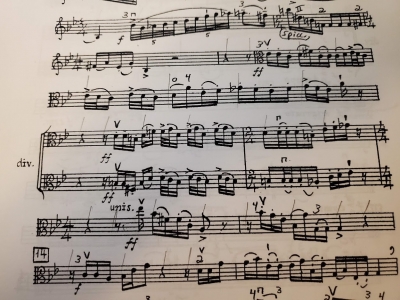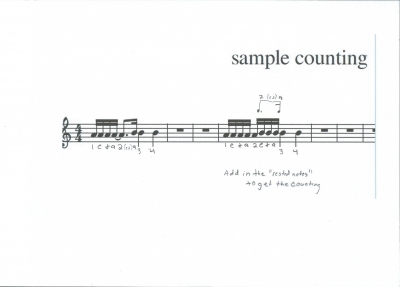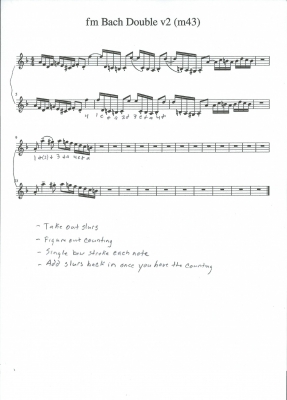Welcome to our forum. A Message To Our New and Prospective Members . Check out our Forum Rules. Lets keep this forum an enjoyable place to visit.
Currently working on errors from the latest (SimplePress) forum update. Many issues have been resoled and others are being worked on. Thank you for your patience.
 Topic RSS
Topic RSS



 (4 votes)
(4 votes) Regulars
 Offline
Offline







What in anyones opinion is the very best way to learn how to read music. I struggle with the length of notes, I know the 1 e an da, and the one and a, ways of counting, which is easy enough with single notes but when they are linked together in say, a sixteenth note linked to a dotted eighth, or combinations of notes I get mental block. If I hear a tune first its no problem, but somehow I feel this isnt doing things correctly, any and all advice would be welcome.
Cant beat a sunny day
Regulars
 Offline
Offline






id say unless youre taking a sight reading test during an audition for an orchestra spot, theres nothing at all wrong with listening to a piece of music first. i actually think thats a good idea. you can always pencil in note counts above the measures beforehand. or clap out along with a metronome which is very handy. if youre not using a metronome or drum track start giving that a try.
have you seen this?
Regulars







There's never anything wrong with penciling in beats whenever the printed music is confusing. It's done at all levels, up to and including professional.
If there's a lot of ink on the page, or if the beaming is inconsistent, orchestra players often mark each beat on the page with a penciled-in vertical line. Here's what it looks like in a part I used: note the vertical lines above the staff.
Regulars
 Offline
Offline







Regulars










stringy said
What in anyones opinion is the very best way to learn how to read music. I struggle with the length of notes, I know the 1 e an da, and the one and a, ways of counting, which is easy enough with single notes but when they are linked together in say, a sixteenth note linked to a dotted eighth, or combinations of notes I get mental block. If I hear a tune first its no problem, but somehow I feel this isnt doing things correctly, any and all advice would be welcome.
One of the things you could do to practice timing on the tied notes is to simplify it by removing the slurs, single bow stroke each note to get the counting of each note, & then putting the slurs back in. Also, to add the “rested notes” in, like in the case you've indicated of a 16th note linked to a dotted 8th. I’ve attached examples below.
When I was young & started drum lessons in school, my music teacher insisted that I count everything out loud before I was allowed to play it. And then I would have to count it out loud as I played it. I hated it. At 10 years old, I found all of this very tiresome, and I always let my feelings be known. I would always ask, “Can I just play it?” or “I counted it last time.” And she would always respond by saying something like, “You need to know how to count it.” or “You need to count it out loud again to show you know how to count it.”
After a year of that, I was allowed to play without counting out loud. But if I made a mistake, one of the first things she would ask me would be, “Well, what does it say?” & I would respond with the counted out measures/phrase, like, “One-La-Le – Two-Le – One-Le – Two-Le . . .” Then she would say, “Ok, well play that. If you count it, you won’t mess it up.”
I guess my point is, don’t discount (no pun) the importance of actually breaking down the counting of a section that is causing you rhythm trouble. I still do this—all the time.
Characterize people by their actions and you will never be fooled by their words.
Regulars
 Offline
Offline







Regulars










As I think was mentioned in passing above, separate the reading of the note timing and the playing of the instrument.
Before you pick up your fiddle, go through the music (with a metronome going preferably) and clap out (or sing) the rhythm. Once you're happy you know it, then go on to play the notes on your instrument.
Just to echo what AndrewH said, marking in each beat with a vertical line is very common in orchestras.
Regulars
 Offline
Offline





Milo's bull comes to mind.
Beginners read beginners' music, and their playing and their music-reading skills grow together.
But when beginners take on Bach partitas, it gets tricky, not just for the playing but for the reading also.
I was told, never tap your foot, but foot-tapping is OK as long as you do it silently. Or you can wiggle your toes inside your shoes. If a piece is slow enough you can tap out the eighth notes. That often happens with slow Bach where the rhythms can be quite complex.
Before playing a piece on the violin "sing" it, just tum-te-tum type thing to get the rhythms clear in your mind. Clap the eighth notes and tum-te-tum the rhythms.
Indian musicians learn stuff that way, don't they?
(sorry, I inadvertently repeated what Jim said)
Andrew
Verified human - the ignominy!
Regulars




I like using a drum machine over metronome for things like that. Having the subdivisions combined with going slowly at first helps me really feel the pulse of what's going on. For me that really shortcuts the counting and goes straight to how it should feel.
New member
 Offline
OfflineYou learn to read music like you learn any new language. Go to the library and get some beginning books. Are you wanting to learn Treble clef, base clef, or both When you've gotten as far as you can on your own and feel you want to know more, go to a music store (beat maker blogs) or college and ask about lessons.


 Log In
Log In Register
Register















